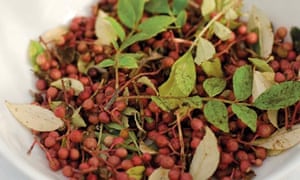
 4
4







 1
1




Weeds are just plants with enough surplus will to live to withstand normal levels of gardening!--Alexandra Petri




Mk Neal wrote:Seems like a good list of herbs and vegetables. If you are looking at what you can get use out of within the next five years, and only partial sun, I think you should put the annual herbs and veggies you like best in the sunniest parts to the yard. Plant some more shade-tolerant perennial flowers nearer the house to attract pollinators.
Mk Neal wrote:
For fruit, you might have better luck with currants against the west fence, they do OK in part shade and also will get you some berries after two years. Most of them are thornless and not quite as aggressive as raspberries/blackberries, so not leaving a bramblepatch for future tenants, just soem bushes they can enjoy or ignore. Grapes take longer to produce, and require more maintenance, but if you plan to maintain ownership of the property, you could keep them up even after moving out.
 1
1




"The world is changed by your example, not your opinion." ~ Paulo Coelho
 1
1




I work for the man but plant for the pollinators~




Hayley Stewart wrote:So first of all, I apoologize - I'm just a beginner myself, but couldn't help replying. Please take the following thoughts and suggestions with a pretty coarse grain of salt. I've been gardening on my apartment balcony for 4 years now and I've recently been lusting pretty hard after the opportunity to work with a larger space (my balcony is about 8ft x 10ft) - so I'd be the happiest tenant taking over your proposed garden!
I think it's a good idea to take this first year to keep things flexible so you can observe how things grow and test out these ideas. I don't see why a raised bed system couldn't be retired to some easy/no-care native plants that your neighbours/new tenants could enjoy when you move out, if they don't want to garden. That being said, a first year in containers could show you where the best places for some of the plants you want to grow will be, and give you some time to source materials for your raised beds. There are tons of people in my neighbourhood who build very simple trellises over their carports and successfully train grape vines overtop, might be a good option if you'd like to maximize your growing space and don't have much success along the fences.
Hayley Stewart wrote:
Finally, the light issue is annoying but it might not be the worst problem. If anything, it might just mean revising your plant list. There are lots of tasty plants that do fine in shadier areas: Shade Tolerant Edibles
Again, things can always be moved. I have had to do a lot of digging to find out how to work my plant list into useful guilds, but small guides like this are a good starting point. Note taking really helps! Companion Planting - west coast seeds
 1
1




Heather Staas wrote:
Currants and gooseberries are hard to find in stores, but you can sometimes find them at fresh farmers markets when they are in season! I love them, quite tart and juicy.
Heather Staas wrote:
I really like the plan with parking and the keyhole beds, when I rented I would have loved the chance to have something like that to grow food and herbs in while I rented.
 1
1




Miles Rose wrote:
What a great idea to trellis over the parking area! Initially I had pretty much written off the parking area except for maybe trellises along the fence lines, but trellises on top of the parking area would allow me to reclaim much of that area for the garden. The only concern I might have about growing vining berries there is the "mulberry effect" where berries rain down on vehicles, birds perch and eat the berries and their red colored manure also rains down on the cars! Just gotta harvest them fast I guess! Maybe growing pole beans on the carport trellis would be less messy? What plants species do the trellis carports in your neighborhood have?
I work for the man but plant for the pollinators~

|
Yeah, but does being a ninja come with a dental plan? And what about this tiny ad?
Freaky Cheap Heat - 2 hour movie - HD streaming
https://permies.com/wiki/238453/Freaky-Cheap-Heat-hour-movie
|





